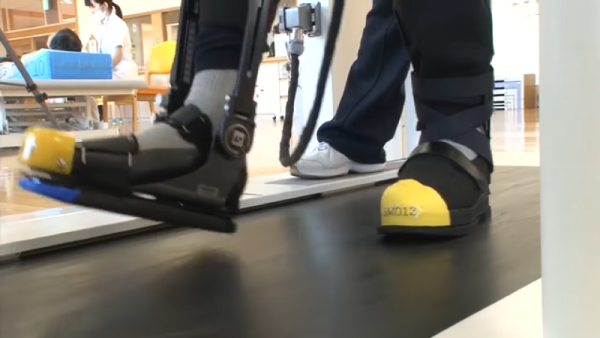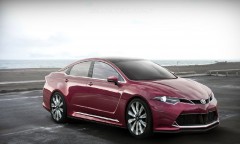By KM Diaz, | April 12, 2017

The wearable leg brace called "Welwalk WW-1000" is made up of a mechanical frame to suit the leg of the person from the knee down. (YouTube)
Toyota has developed a new wearable robotic leg brace to help partially paralyzed people walk again.
The wearable leg brace called "Welwalk WW-1000" is made up of a mechanical frame to suit the leg of the person from the knee down. According to Toyota, Japan will rent 100 kinds of these systems for use in medical facilities by the end of the year. The service fee includes a one-time initial charge of 1 million yen ($9,000) and a 350,000 yen ($3,200) monthly fee.
Like Us on Facebook
Eiichi Saito, executive vice president at Fujita Health University and a medical doctor, explains that severely paralyzed patients on either side of the body because of stroke or other ailments can also wear Welwalk. Fujita Health University will join Toyota to develop the wearable leg brace.
Saito noted that patients using robotic leg braces recover faster because its sensitive robotic sensor improves the level of support compared to a human therapist. Since paralysis is one of the most common conditions in Japan, WelWalk will be very helpful.
Other Japanese automakers have also developed humanoid robots for manufacturing and other uses. One example is Honda's "Asimo humanoid." The system can dance, run, have a simple conversation, and pour a drink. WelWalk, on the other hand, is a different system that applies more to robotics rather than a stand-alone robot.
The field of robotic for rehabilitation and walking is growing quickly. Israeli manufacturer ReWalk Robotics has developed a battery-powered wearable exoskeleton for patients relying on a wheelchair to walk and stand straight.
These systems help therapists to monitor the progress of the patients, and can be more precise, according to Luke Hares, chief technology officer at Cambridge Medical Robotics in Britain.
The R2-D2-like machine called "Human Support Robot," which was also developed by Toyota, can help bed-ridden patients to pick things up using its mechanical arm. Meanwhile, Welwalk shows Toyota's desire to use robotics in other fields aside from entertainment.
-
Use of Coronavirus Pandemic Drones Raises Privacy Concerns: Drones Spread Fear, Local Officials Say

-
Coronavirus Hampers The Delivery Of Lockheed Martin F-35 Stealth Fighters For 2020

-
Instagram Speeds Up Plans to Add Account Memorialization Feature Due to COVID-19 Deaths

-
NASA: Perseverance Plans to Bring 'Mars Rock' to Earth in 2031

-
600 Dead And 3,000 In The Hospital as Iranians Believed Drinking High-Concentrations of Alcohol Can Cure The Coronavirus

-
600 Dead And 3,000 In The Hospital as Iranians Believed Drinking High-Concentrations of Alcohol Can Cure The Coronavirus

-
COVID-19: Doctors, Nurses Use Virtual Reality to Learn New Skills in Treating Coronavirus Patients












